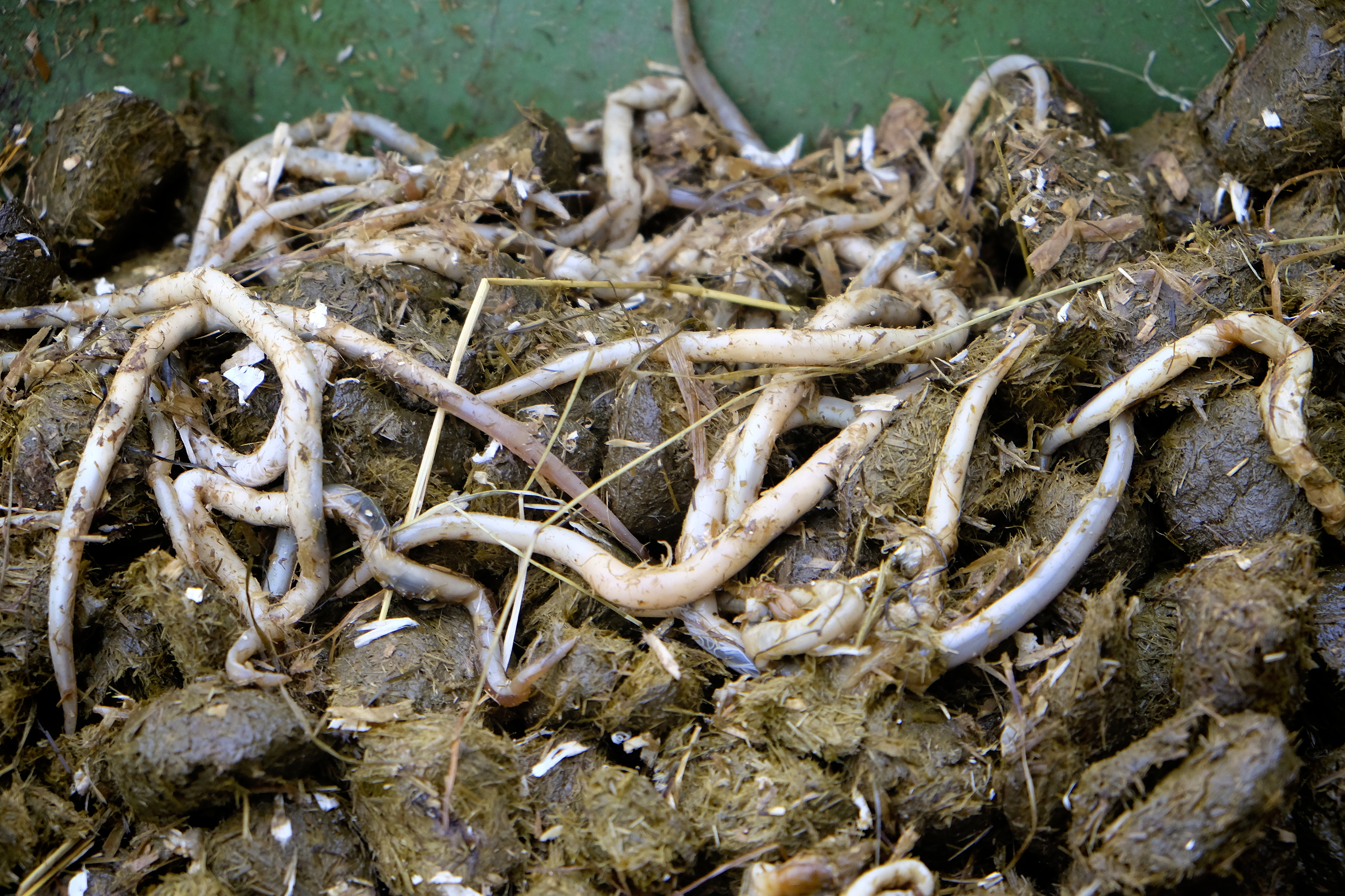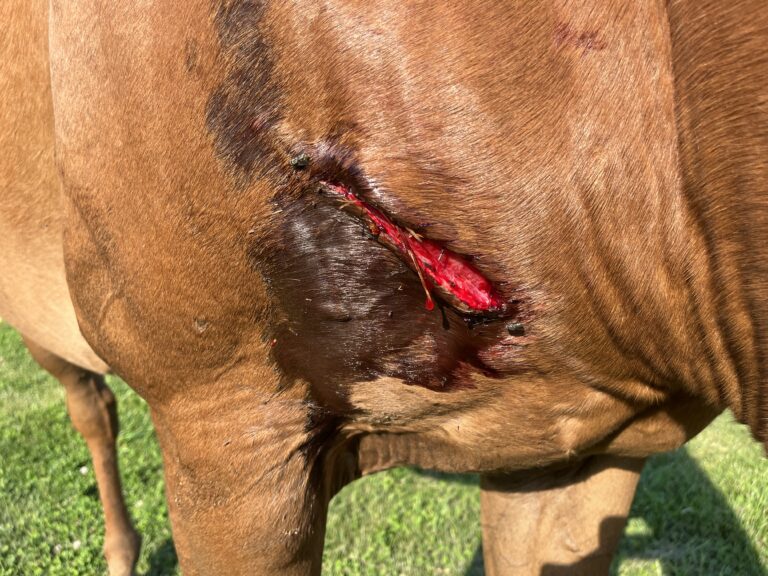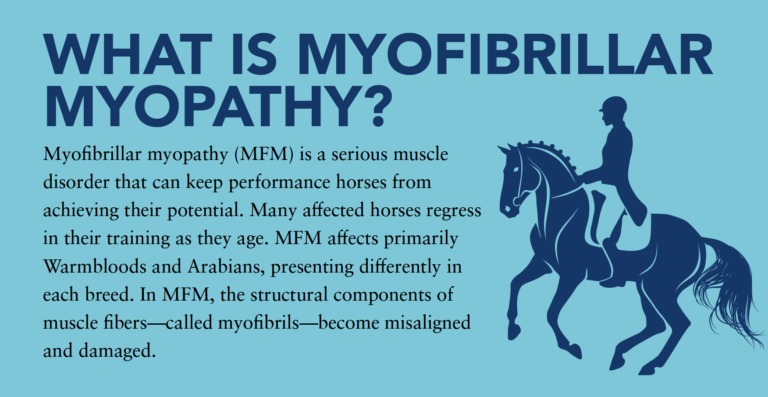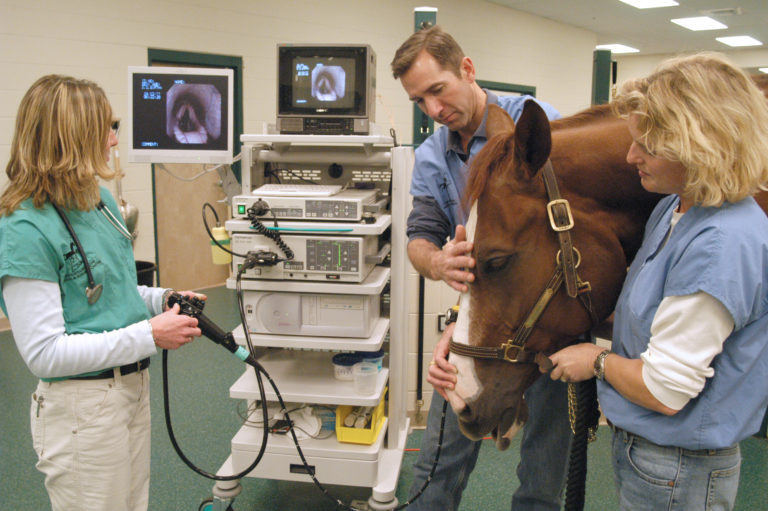
)
Internal parasites: They’re wiggly, gross and latched on to your horse’s intestines—the stuff of nightmares. And in certain situations, they can even be deadly to your horse. But no worries—you’ve got your trusty arsenal of paste dewormers from the feed store. Just like you’ve done for years, you check the calendar, choose your weapon, quickly depress that handy apple-flavored tube into the mouth and, boom, he is safe, right?
Times They Are A-Changin’
FEI veterinarian Dr. Anne Christopherson has treated clients’ horses in Minnesota and central Florida for more than 20 years and during her career has seen some monumental changes in deworming practices. “When I started practicing, we were still routinely deworming with organophosphates via nasogastric tubes,” Christopherson remembered. “But then paste dewormers came on the market, and I believe having them readily available and affordable to the majority of owners has been the best thing that happened to horses. We now see dramatically fewer parasite-related diseases, and I think this has directly contributed to horses living longer and healthier lives.”
Paste dewormers were (and still are) offered with different active ingredients, such as benzimidazole, pyrantel and ivermectin, some of which work better than others against certain parasites. So with the influx of paste dewormers onto the equine market, it became a widely held belief that horse owners should alternate between different classes of products every two months throughout the year. This rotational schedule, which worked like clockwork and was ingrained into generations of horse owners, generally worked very well—until now.
The Dreaded “R” Word: Resistance
As years went by, veterinarians like Christopherson noticed the playing field was starting to change back in favor of the parasites thanks to resistance, which develops when a few worms endure a deworming treatment and pass onto their offspring the traits that helped them survive. “After four decades of using the same products on a set schedule year after year, there started to be reports of resistance issues,” she explained. “We probably should have used a more careful approach all along, but at first all the products were effective and it was so easy to just blindly rotate through them.
“Additionally, as the key ingredients in dewormers eventually came out of patent protection and became available in even cheaper generic forms, some horse owners would walk into their feed store and just buy the cheapest dewormer on the shelf over and over, which usually was the same product every time—so this also contributed to additional resistance problems,” added Christopherson.
Some studies have shown that as many as 52 percent of horses remain on an outdated rotational deworming schedule to this day and that an alarming 98 percent of farms have horses with small-strongyle resistance to certain products. “Just like we also see now with certain antibiotics, with the overuse of antimicrobials when they’re not necessary, it creates resistance and it’s a problem we created ourselves,” Christopherson continued. “And since we haven’t had many new deworming chemicals introduced to the market, resistance is a big concern because when it develops, our products are less and less effective and we don’t have any new options to turn to.”

)
Fight Smarter, Not Harder
Today, most veterinarians like Christopherson advise their clients to throw their rotational deworming calendars into the trash and devise a smarter, more targeted strategy for their horses to combat internal parasites. The first step is knowing your enemy.
As far as internal parasites go, a horse is predominately faced with the same players as in years past, but some have become more or less predominant over time. Large strongyles used to be a major concern and cause of colic, and awareness of tapeworm risks have increased over the last decade. But overall, small strongyles have become the most insidious—and resistant—foe. Which is why it’s critical for horse owners to know exactly what they’re dealing with. Veterinarians most commonly use a fecal egg count, which is a microscopic examination of a horse’s manure to look for and measure the number of strongyle eggs a horse is passing through his body and into the environment. Christopherson noted that the fecal egg count is an effective gauge as long as the manure is fresh and stored properly.
After sending a sample to their veterinarian, horse owners will receive a report with a number followed by EPG (eggs per gram), which will indicate whether a horse is a low shedder (0–200 EPG), medium shedder (200–500 EPG) or high shedder (greater than 500 EPG). High shedders are the biggest concern, not only for their own health but because they can repeatedly and heavily contaminate a pasture, infecting other horses and continuing the cycle. After the initial survey, most veterinarians recommend performing a second fecal egg count reduction test 10 to 14 days after deworming to gauge effectiveness. Ideally, the count should drop by 95 percent.
Even horses living in the same pasture can carry different parasite loads, so for best results every horse should be routinely tested. Studies have indicated that just 20 percent of horses in a herd produce 80 percent of the parasites, making it critical to identify what Christopherson calls the “sentinel horse.” “This is the one horse on the farm who has chemical-resistant strongyles and always carries a higher load of parasites, so he’s the one infecting the other horses,” she explained. “He’s the one we worry about and want to control because if we have him as clean as possible the others will fall in line. We often end up testing the sentinel horse once a month until we get the situation under control and then we’ll usually go to twice a year.
“Once you know what you’re facing, your veterinarian can help make the decision as to what chemical should be used and how,” Christopherson continued. “But remember, regardless of the product you use, one of the key things is to obtain as accurate an assessment of the horse’s weight as possible and treat him according to that weight. There are some products which are dangerous if overdosed and all products are ineffective if underdosed.”
Go Your Own Way
Christopherson emphasized that every farm should have its own deworming protocol individually designed in partnership with a veterinarian. “Don’t just buy what catalogs tell you to or what your friends on social media use—it may not be right for your horse and by blindly using the wrong product you can take something which may have been effective in a certain situation and render it useless,” she noted.
Targeted deworming plans will vary from region to region and even from farm to farm. “I would certainly have different recommendations for horses in Minnesota, where cold weather suppresses parasite activity in the winter, versus in Florida, where we can grow anything year-round,” Christopherson explained.
“A modern deworming strategy also takes into consideration a number of other factors, including the individual horses and the strength of their immune systems; the stocking [equine population] density on the farm; potential exposure to other horses, such as grazing in common areas at shows; manure management practices and whether it’s an open or closed farm, just as a few examples.
“To a degree, the age and activity level of horses also come into play, as younger horses are more susceptible to certain parasites, such as ascarids, and horses do tend to develop some natural immunity to some parasites as they mature,” she added. “For instance, on a large breeding farm a herd of weanlings will most likely be on a different plan than a separate field of broodmares. At a boarding stable, a competitive dressage horse that travels regularly to shows may be on a different protocol than a recreational riding horse that happens to have a high level of natural immunity, lives in a closed field with no new horses and never leaves the property.”
Hidden Danger
Christopherson also warned that looks can be deceiving. While it’s often easy to identify a horse with a heavy parasite load due to an unthrifty appearance, weight loss, diarrhea or colic, it’s much more difficult than one might think to look at a healthy horse and decide how much of a parasite problem he’s carrying around, even in the show ring.
“I’ve seen some pretty high loads come out of what appeared to be very healthy high-performance horses,” Christopherson warned. “And it’s usually small strongyles, which are difficult to deal with because of the way they encyst in the intestinal wall. There’s nothing worse than the feeling you get when your fecal egg count comes back with the letters ‘TNTC’—too numerous to count—after thinking that you’ve been doing everything right in deworming your horse, who looks completely fine standing in the stall. If there were signs at all, they can be incredibly subtle. So I can’t stress it enough—without fecal exams by your veterinarian, you’re working completely blind.”
The thought of any parasite chomping away on your horse’s intestinal lining is horrifying, but an effective and modern deworming strategy will ensure your horse enjoys a perfectly clean gut, free from any future infestation, right? “Wrong,” said Christopherson. “We are better equipped to get close to that goal than we used to be, but the goal should be to keep them as clean and healthy as possible, not expect total prevention. Horse owners will probably still see one or two eggs reported on a routine fecal egg exam, and that’s normal. It’s just not realistic to expect that every horse on your farm will be parasite free for the rest of his life, unless we come up with some new and better chemicals.”
Frustrating? Yes. If all the parasites are killed off with the administration of a dewormer, how can they keep coming back like something out of a horror movie? Christopherson reminds owners that most parasites have an approximately 21-day life cycle, so on the day a dewormer is administered, that chemical is effective only on certain stages of life of any parasites that are present—not necessarily every stage of life. “So if 75 percent of the parasites that are present are adults and the chemical is 100 percent effective on adults, you’re still only getting that 75 percent and leaving the 25 percent that are still growing. That’s why we often do repeat testing and treatments when we discover a resistance situation,” she added.
On the other hand, success is possible, and some horses in certain situations can enjoy a chemical-free life. “I do have a few clients with closed farms where we’ve gotten to the point where we haven’t used a dewormer in a couple of years,” Christopherson said. “If the horses are clean, we don’t just give them dewormers any more for the heck of it because of resistance concerns.
“Resistance is an ongoing problem, and we all have a responsibility,” she continued. “Knock on wood, I have not had a situation yet where we couldn’t eventually find something that worked to help get a horse’s parasite problem under control, but there is no silver bullet. The bottom line is that the days of blindly administering pastes are over. Every owner needs an individual parasite-control strategy for his or her horse and farm designed in partnership with a veterinarian, using both chemical products and good management practices.”
To learn more about the different types of parasites that are most troublesome to your horse, visit the American Association of Equine Practitioners’ website (aaep.org).











